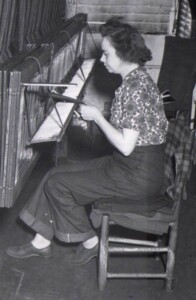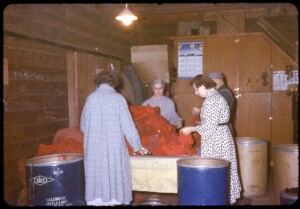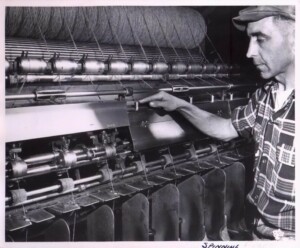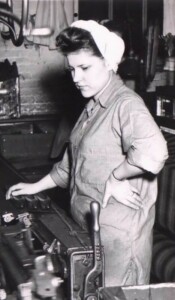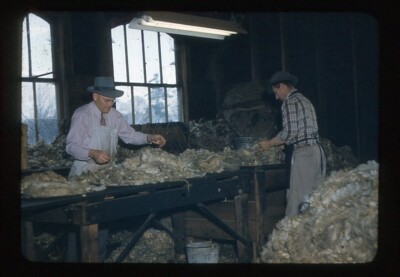What was it like working at the Thomas Kay Woolen Mill?
The short answer is it varied. In its 73-year existence the Thomas Kay Woolen Mill (TKWM) and the world changed quite a bit. On this page we try to paint a general picture of what work life was like for the hundreds of men and women who worked for the mill. If you want to learn more about the individuals who worked here check out our worker biographies page here.
Get an introduction to the work environment here with Tom Kay’s remembrances of worker camaraderie and habits from tobacco to horseshoe rivalries!
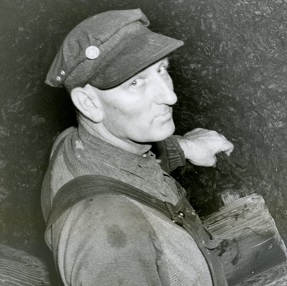
Arch Boyles in Dye House, 1947 (Detail). WHC Collections M3 1992-101-0010
Frequently Asked Questions
How long was a work week?
Work Week
Hours and numbers of days worked in a week varied based on the worker’s position, job, number of orders the mill had received and time period. World events like World War II saw increases in production and loosening of labor laws. Eventually a 40 hour work week would become the standard, but early workers often worked 6, 10 hour days a week. Learn more about hours and pay here.
Did workers ever strike?
Strikes
TKWM workers walked off the job during the national 1934 General Strike of Textile Workers in solidarity with workers across the country. The mill was closed for 16 days. The mill was closed for 15 days in 1940 because of a strike. Learn more about union activity at the TKWM here.
Were workers here unionized?
Unions
Being a union member was not a requirement of working at the TKWM until 1940. Many employees at the Thomas Kay Woolen Mill were mostly members of the United Textile Workers (UTW) of America Local 2090, which also had members at local linen mills. Learn more about organized labor at the TKWM here.
How did wartime affect the workers?
Wartime
During WWI, WWII and the Korean War the TKWM was considered and essential industry. This meant draft exemption for some of the workers. Many workers voluntarily chose military service and there is some evidence that more women entered the workforce during war time, but the TKWM employed women since the beginning. War regulations meant more federal regulations on wages. Employees were fingerprinted as a precaution against sabotage and some received special gas dispensations to be able to travel to work. Read more about wartime policies at the TKWM here.
What Did the Workers Do?
Workers had a wide range of jobs in production and administration of the company. This is partial list of jobs held at the TKWM and what their job duties might have entailed. Note, most departments in the mill had a foreman who was often referred to as “Boss.” In some of the records you might find Boss Carder or Boss Weaver. This means they were the head of that department and usually the highest paid!




